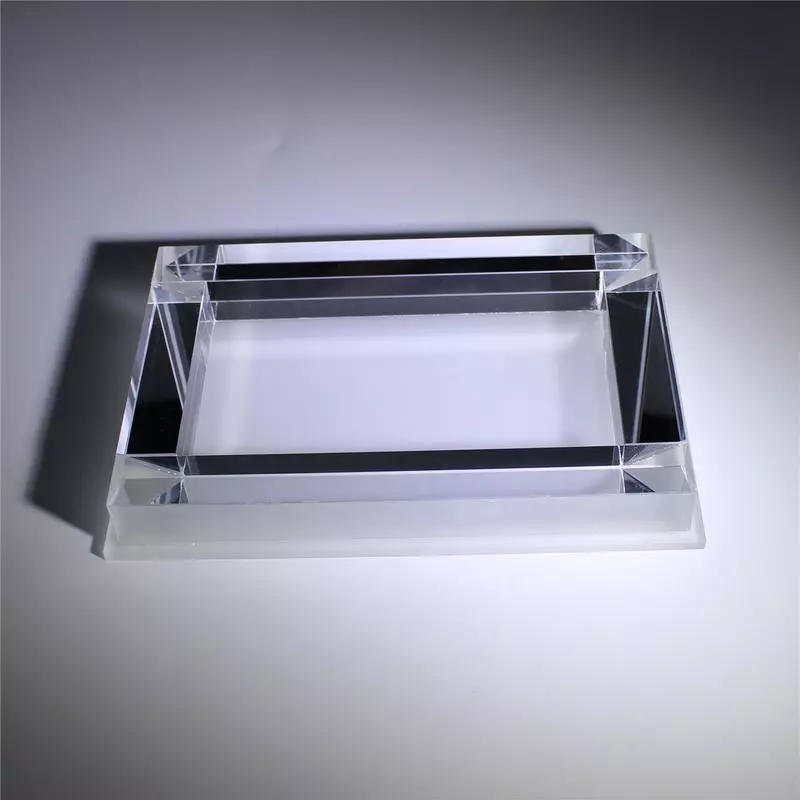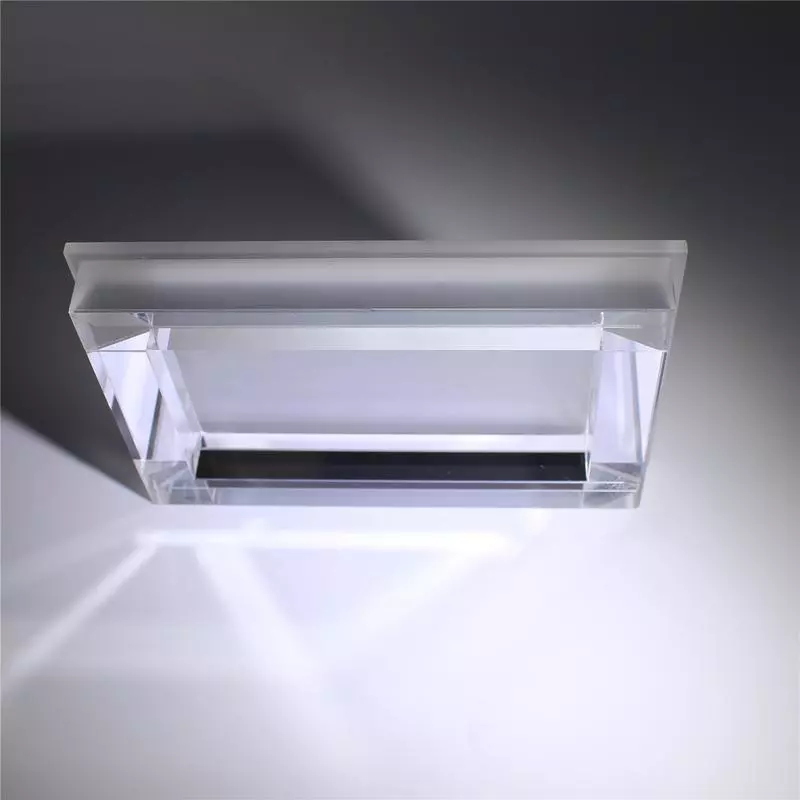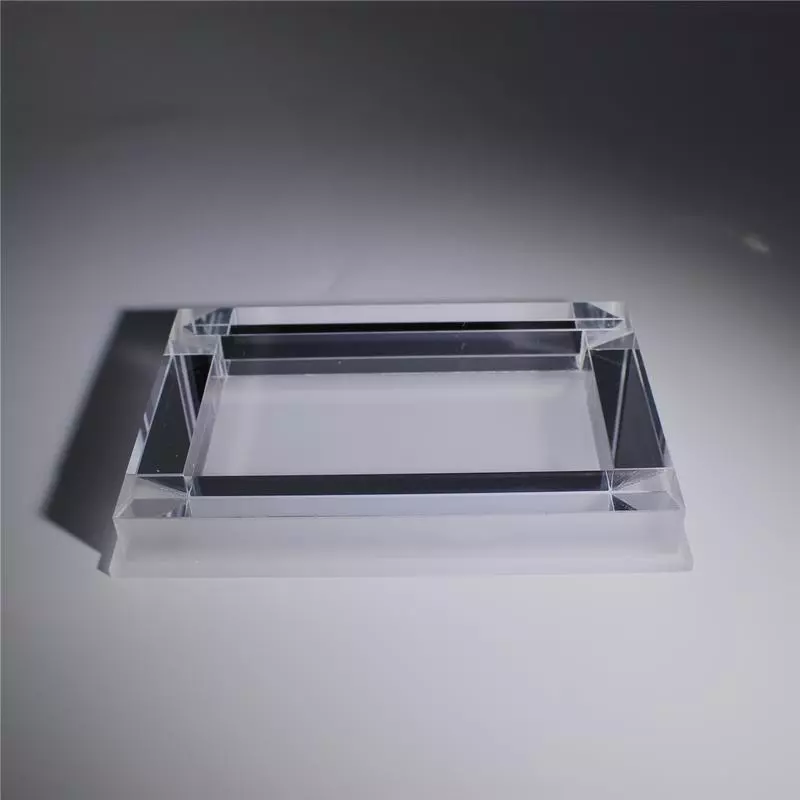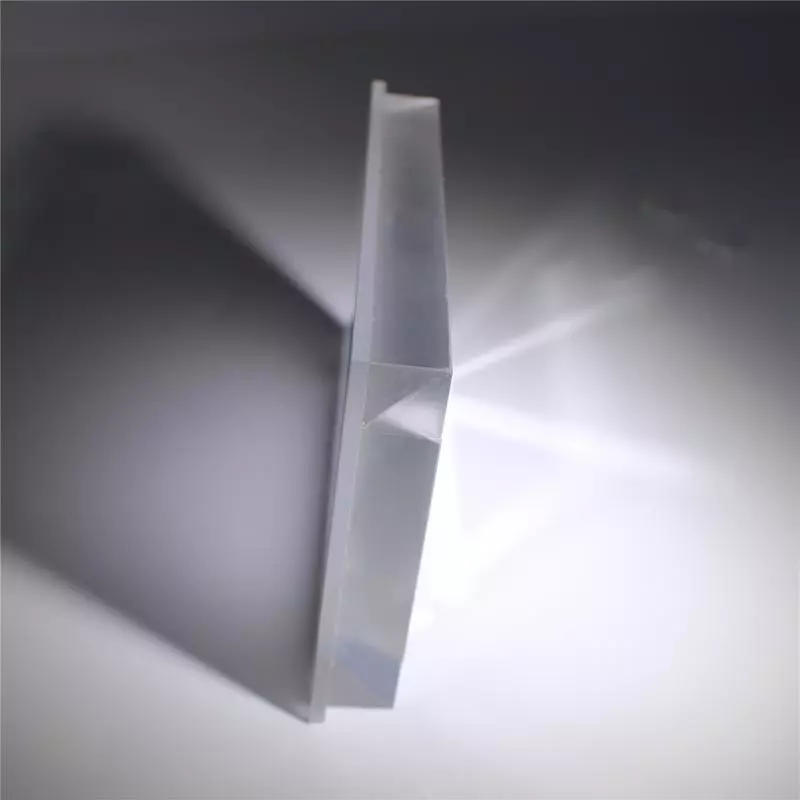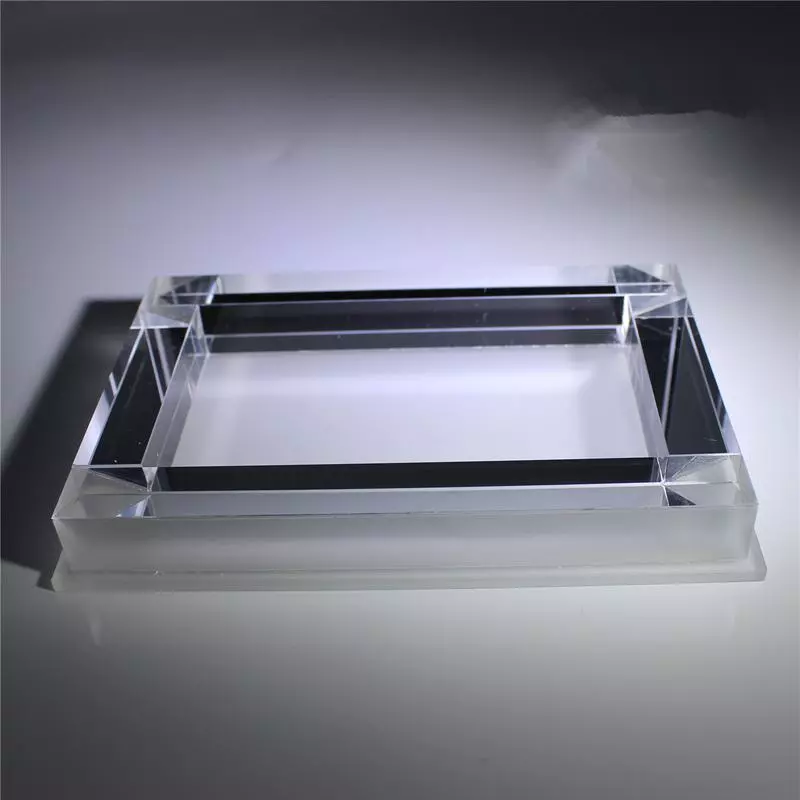UV Fused Quartz Cuvettes for Spectrophotometer
Dimension: 0.5mm - 200mm
Surface Accuracy: lambda/20
Size Tolerance: +/-0.01mm
Angle Tolerance: +/-30 sec
Coating: AR, HR, HT, customized as requested
Quartz cuvette (also known as absorption cell, sample cell) is used to hold reference liquid and sample liquid. It is matched with spectrophotometers, hemochromin analyzers, particle size analyzers, etc., which can be used for quantitative and qualitative analysis of substances. It is widely used in chemical industry, metallurgy, medical treatment, medicine, food, environmental protection, power plants, water plants , Petroleum and other industries, departments and universities, research institutes, testing, laboratory use.
Our Cuvettes are high-quality cells designed to hold liquid samples. The UV fused quartz glass construction allows these cuvettes to be used with UV light at wavelengths as low as 200 nm, as well as with visible and infrared light up to 3 µm. The polished sides can be cleaned using standard optics cleaning procedures. Versions are also available with one of two PTFE tops: a cap to block dust and other particles or a stopper to prevent evaporation and provide an airtight seal.
Why do we use quartz cuvettes?
Historically, reusable quartz cuvettes were required for measurements in the ultraviolet range, because glass and most plastics absorb ultraviolet light, creating interference. … Glass, plastic and quartz cuvettes are all suitable for measurements made at longer wavelengths, such as in the visible light range.
Can we use quartz cuvette to measure absorbance at 1000 nm?
Most recent answer. It is easy to find the absorption spectra of quartz and water online. Neither have significant absorption at 1000 nm.
How many types of cuvettes are there?
The four most popular cuvette materials are listed below: Optical Glass or Pyrex Glass. UV Quartz. IR Quartz.
Why do we use quartz?
Quartz is important for the Critical Zone because of its composition and distribution. Quartz is the second most common mineral in the Earth’s crust, right after feldspars. Because quartz is resistant to weathering, it often is one of the last minerals to dissolve.
Why does quartz not absorb UV light?
Quartz will transmit UV from 180 nm to 400 nm.
Since quartz is made of silicon dioxide, glasses made from a high proportion of this material will also readily transmit UV. One such glass is known as VYCOR, which is 96% silica. However, remember that the shortest UV is the most damaging to the skin and cells.
Our Ordering Process
Send us your request with detailed specifications
Receive a commercial offer with terms and costs
After your approval, we handle manufacturing, quality control, and shipping
📦 Shipping
3-5 days in EU, from 10 days to USA
💳 Payment methods
Cash, Bank Transfer, Cards (Visa, Mastercard, Amex, Discover) and PayPal
💬 Questions?
Contact us via WhatsApp, phone, live chat or email
